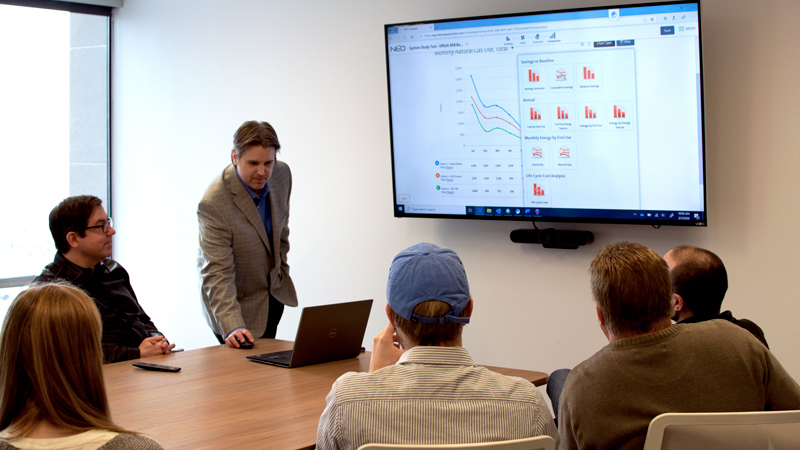Recent Articles
Nic Johnsen leads Fire Protection Engineering
Johnsen’s holistic approach adds value through performance-based design, informed by contracting and risk-management experience.
Steven Andersen promoted to National Laboratory Specialist
The new position establishes a national resource for all LEO A DALY studios and markets to offer best-in-class laboratory design
Ed Benes, PE, named President and Deputy CEO
Benes will work closely with Leo A. Daly III, the firm’s third-generation owner and CEO, to shape the future of LEO A DALY
Minnesota Army National Guard Division Headquarters wins SAME Grand Design Award
Recognized as one of the best works of federal architecture built this decade, the LEO A DALY-designed facility reimagines the National Guard readiness center for a new era of warfighting, peacekeeping and emergency response missions
LEO A DALY transforms Capitol Hill office building into mixed-use development
The $200 million project will add three stories, a new skin and a vibrant mix of uses to a former government building
LEO A DALY invests in early energy modeling capabilities
Paul Henderson spoke with BD+C about a new initiative to provide clients with life-cycle and energy cost analysis early in design

The following is excerpted from the BD+C article by John Caulfield.
Paul Henderson joined LEO A DALY as its Senior High Performance Engineer last October. A veteran of the Weidt Group, Henderson, PE, BEMP, LEED AP, GGP, says he was attracted to his new empoyer for the multiple disciplines it has under one roof. But one thing was missing from its integrated design process: early energy modeling.
At his previous jobs, Henderson had done energy modeling for at least a dozen years, and had applied it
to over 200 projects. In his new position, he has not only launched an energy modeling initiative, but has been pushing the firm to include it in its proposal phase, which at the moment is rare for most AEC firms, he says.
“We actually put in real analysis numbers showing that the design would meet or achieve” code and certifica-tion standards, says Henderson. To do this, his group within the company works with the project’s mechanical engineer to conduct HVAC systems comparisons that incorporate a Life Cycle Analysis, to determine which system would perform best for that particular building.
A proposal that includes this kind of energy modeling corroborates compliance with re-quired codes. “It shows that we’ve done our due diligence concerning a client’s needs, and that we’ve done studies about these systems. It shows we have an interest in this.”
Read the full article:
